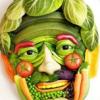If you need a quick energy fix then consuming simple sugars outside of main meals will deliver energy quickly. Eating sugar and carbs with protein and fats will tend to slow glucose and hence insulin spikes slightly. Starchy foods like potatoes and bananas always take slightly longer since the chains of glucose molecules that form the starch need to be broken up.
But in general the concept of combining similar foods together for optimum nutrition has been largely discredited. Your gut walls have a wide selection of receptors for different nutrients and they have little problem selecting what they need from the nutrient mix and chime that passes by.
In terms of energy priority - i.e. what your body will use first -
1. Alcohol. This is considered a toxin and is routed to the liver for immediate oxidation. Any glucose you have absorbed will wait until all the alcohol has been removed. Note that alcohol is not a carbohydrate or a sugar.
2. Fructose. This is metabolized in a very similar way to alcohol - many of the same pathways as for alcohol.
3. Glucose. Glucose is toxic above a very narrow tolerance. You need to maintain about 5g in the blood and little more on average - about a teaspoonful. A single slice of bread is about 10g. Your body will go to extremes to maintain that steady state and where insulin is the guardian, pushing glucose into cells to be burnt for energy or triggering their conversion to triglycerides for fat storage. Note that humans are very poor at glucose storage, there will be some in the muscles for their exclusive use and some in the liver. This storage form is know as glycogen. In times of exercise the body will pull upon glycogen stores which will run out pretty quickly - often termed as "hitting the wall" when exercising. Having fruit or sugary drinks while exercising can work alongside glucogen usage. Liver glycogen can run low in a few hours anyway signalling hunger and the need to eat again, this is why on carb heavy regimens you need to eat a meal or snack every 2-4 hours. Note that fats are not used as energy while insulin levels are high. Insulin inhibits lipolysis, the breakdown of Fats (triglycerides) into free fatty acids that can be used for energy. If you want to get fat or increase your fat storage then a constant intake of high carbohydrates will always prevent fat from being used.
4. Fats. Different fats are used in different ways, much is used for body maintenance and the rest for energy if insulin levels are low enough. Fats take a longer pathway to digest so do not offer the opportunities for a quick energy fix, except for the 8 and 10 carbon saturated fats - capric and caprlic acids - these can be used for energy directly. MCT oil, palm oil, and coconut oil contain these types of fats. Fats can deliver some 9 calories per gram as opposed only 4 from glucose and around 7 from alcohol. Humans are well adapted to storage of fats for energy. Adipose tissue can hold many thousands of calories ready for energy as opposed to only a few hundred from glucose storage. Many endurance athletes are now turning to fat as their primary fuel source, but does take some adaptation. Would not work well for burst type sprinters. For our ancient human ancestors who did not have ready access to supermarkets, going for long periods without food would need plenty of fat stored to survive. A nice binge when food became available again to replace the fat. Humans are superbly well adapted to use fat as their primary fuel.
5. Protein. Protein is primarily used for body maintenance and isn't a fuel source. Protein can be used for fuel by converting specific amino acids into glucose by the process gluconeogenesis. Many do not see this as a process that should be used frequently as it appears to be inefficient although that is debated. This would occur if there was insufficient carbohydrates consumed, or you were starving and the protein from your muscles offered adequate protein.
Glucose or fats offer the primary choices of energy. If glucose is your choice, implies a high carbohydrate regimen, then be aware that it can only be used with adequate supplies of insulin. Insulin is generated by just a few cells in the pancreas. If your carbohydrate usage is high for long periods then there is a common tendency for the cells in the pancreas to become exhausted and die - you becomes diabetic. If you also consume fat alongside the glucose then since the fats cannot be used for energy (insulin inhibits lipolysis) then the triglycerides will tend to accumulate in the bloodstream, actually held in lipoproteins (LDL) where they share space with cholesterol. This tends to increases the overall number of LDL particles which represent a high risk factor for heart disease.
If you choose fat as your primary energy source with very low glucose intake then you avoid both the diabetes issues since the pancreas will not be over-utilized, and you avoid the build up of serum triglycerides and hence high LDL count since you will be burning the fats for energy, and hence avoiding CVD.
If you choose glucose and low fat, then your risk of diabetes remains high as well as obesity. Note that excess glucose converts to fat and then you are back to the high LDL count and CVD risk.
So to answer your original question - is including sugar/glucose in meals a good thing? Absolutely not, or at least keep to a minimum, say from 20g to 120g per day. A little more if your genetics and past history will tolerate it.
Edited by Cris Barrows, 22 June 2013 - 10:23 PM.
















































